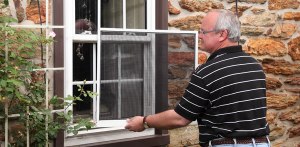5 Ways to Make a Personal Statement at Home

There’s so much advice out there about neutralizing your home design for maximum resale value that our personalities are in danger of getting lost in the shuffle. Unless you’re getting ready to put your home on the market soon, go ahead and let your individuality shine through with interior design that reflects your tastes and interests. Here are five easy ways to do so:
1. Make it a grand entrance. Maybe it’s an unusual door knocker or a doorbell that plays Beethoven’s 5th—or a whimsical piece of statuary or planter filled with something unexpected, like a well-stacked group of beach rocks. Try hanging a small sign with a favorite saying that welcomes guests. Whatever you choose, small touches like these make a personal statement before anyone even gets inside.
2. Put furniture in the ‘wrong’ room. Remember when Joey and Chandler opted for a foosball table over a kitchen table? Maybe something similar will work for you. Perhaps there’s a spot in your kitchen for a chaise lounge? Add a loveseat to a bedroom instead of the requisite side chair, or an antique, full-length mirror in your living room. When done tastefully, furniture in unexpected places can work wonders by making a very memorable impression.
3. Make your walls a self-expression. Don’t play it safe when it comes to wall décor. Go beyond the usual framed prints and accent mirrors and do something that reflects your personality. Music lover? Frame and hang beloved album covers or concert posters. Traveler? Turn a wall into a collection of photographs and framed objects that reflect your favorite destinations. Poet? Use stencils to inscribe your favorite quote right on the wall. Artist? Go a step further and add a mural.
4. Put your passions on display. Whether it’s comic books or collectible snowmen, weave your collection into your interior design with creative and tasteful shelving or a display unit. The key here is to choose one area—don’t let your collection take over your entire home.
5. Show off your green thumb indoors. If you’re a plant lover, don’t refine your passion to the garden. Incorporate more indoor plants and flowers within your home and keep your hobby going year-round. Select a sunny spot and start cultivating an orchid or African violet collection. Or choose strategic locations for hanging plants, using attractive planters made from copper, ceramic or other finishes of your preference.
Remember, one of the many benefits of owning versus renting is that there are no restrictions when it comes to design. So make a personal statement and make your home your own.
Learn more about making a personal statement through home décor by contacting me today. 206-276-3289
 More houses are turning into high-tech hubs of connectivity and convenience. Technology, in fact, has become one of the improvements most requested by homeowners, reports the Remodelers Council of the Greater Houston Builders Association (GHBA).
More houses are turning into high-tech hubs of connectivity and convenience. Technology, in fact, has become one of the improvements most requested by homeowners, reports the Remodelers Council of the Greater Houston Builders Association (GHBA).
